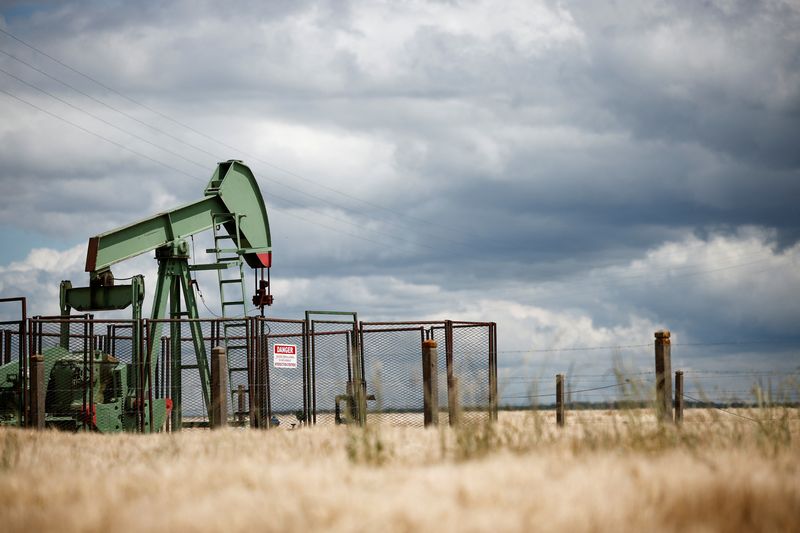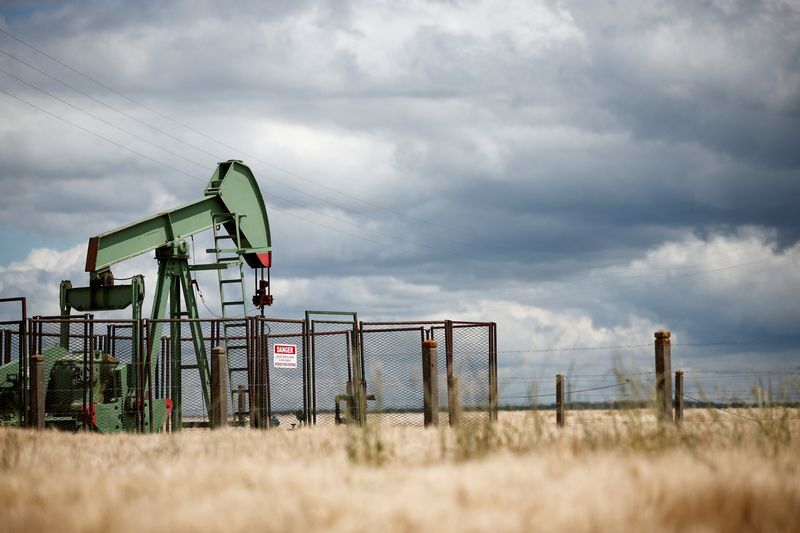
By Scott DiSavino
NEW YORK (Reuters) -Oil prices edged up about 1% on Tuesday on a weaker U.S. dollar on the day when voters cast ballots in what is expected to be an exceptionally close U.S. presidential election, after rising more than 2% in the previous session as OPEC+ delayed plans to hike production in December.
Brent futures rose 35 cents, or 0.5%, to $75.43 a barrel by 1:15 p.m. EST (1815 GMT), while U.S. West Texas Intermediate (WTI) crude rose 37 cents, or 0.5%, to $71.84.
The U.S. presidential contest between Republican former President Donald Trump and Democratic Vice President Kamala Harris hurtled toward an uncertain finish on Tuesday as millions of Americans headed to the polls.
“The (election) result might not be known for days, if not weeks, and it will most plausibly be challenged and contested,” said Tamas Varga, an analyst at PVM, a brokerage and consulting firm that is part of TP ICAP (LON:NXGN).
“Yesterday, however, it was the OPEC+ group that stole the show. Brewing Middle East tension and the weaker dollar also played their parts in sending oil … higher,” Varga said.
The U.S. dollar slid to a three-week low versus a basket of other currencies as traders squared positions ahead of the U.S. election results.
A weaker greenback makes oil less expensive in other countries, which can increase demand for the fuel.
The U.S. trade deficit surged to nearly a 2-1/2-year high in September as businesses boosted imports to meet robust domestic demand and in anticipation of higher tariffs on goods.
Trump has promised to impose a 60% tariff on Chinese goods and at least a 10% levy on all other imports if he wins Tuesday’s election.
Elsewhere in the U.S., energy firms in the Gulf of Mexico started evacuating workers from offshore platforms ahead of Tropical Storm Rafael, which is on track to strengthen into a hurricane this week. Analysts say the storm could reduce oil production by about 4 million barrels.
Oil prices had been supported by the announcement on Sunday by the Organization of the Petroleum Exporting Countries (OPEC) and their allies, a group known as OPEC+, to push back a production hike by a month from December as weak demand and rising non-OPEC supply depress markets.
Still, risk-taking remains limited with a busy week – including the U.S. election, the U.S. Federal Reserve’s policy meeting and a meeting of China’s National People’s Congress keeping many traders on the sidelines, said Yeap Jun Rong, market strategist at IG International, a financial firm.
“Eyes are also on China’s NPC meeting for any clarity on fiscal stimulus to uplift the country’s demand outlook, but we are unlikely to see any strong commitment before the U.S. presidential results, and that will continue to keep oil prices in a near-term waiting game,” Yeap said.
The chairman and co-founder of Gunvor, one of the world’s largest oil traders, meanwhile, said there is little growth in oil demand and the industry is probably over-investing somewhat.
U.S. OIL STORAGE DATA
Weekly U.S. oil storage data is due from the American Petroleum Institute trade group later on Tuesday and the U.S. Energy Information Administration on Wednesday.

Analysts projected U.S. energy firms added about 1.1 million barrels of crude into storage during the week ended Nov. 1. [EIA/S] [API/S]
That compares with an increase of 13.9 million barrels in the same week last year and an average increase of 4.2 million barrels over the past five years (2019-2023).
This post is originally published on INVESTING.



